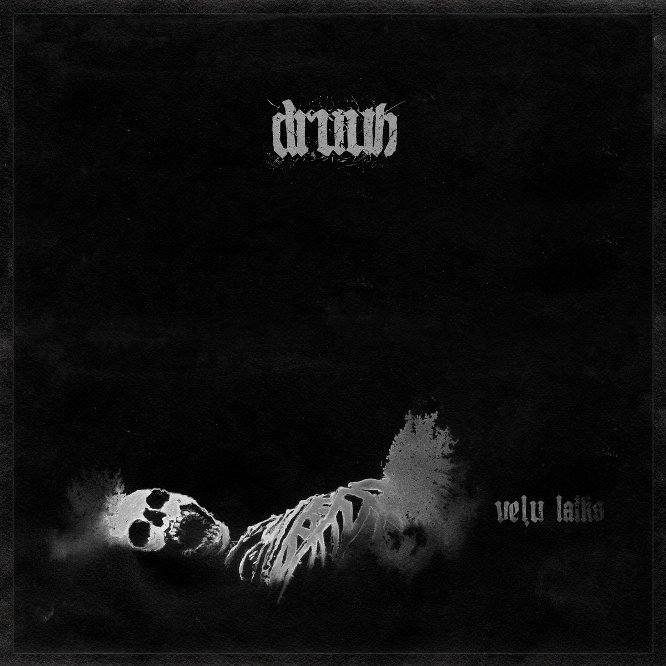Year of release: 2019
Label: Metalkalve
Rating: 7,3 / 10
This is the first release of the Latvian publisher Metalkalve, which was sent to me simultaneously with EREMOS. Unfortunately, circumstances developed in such a way that the publication of the review took a very long time, and for this I apologize to the label.
The still very short life path of DRUUN is intriguingly intertwined with the fate of the most famous Latvian metal band on the planet: SKYFORGER. The thing is that one of the members of DRUUN is Imants Vovers, the drummer of the original SKYFORGER lineup. In addition, he also played in pre-SKYGORGER band called GRINDMASTER DEAD that performed, despite the name, Death Doom Metal with folk elements. And DRUUN, as I managed to find out, consciously continue the traditions of GRINDMASTER DEAD, performing the same rare style of music. There is even a cover of GD on Veļu laiks”. Moreover, the kokle (Latvian folk instrument) parts on tracks 7 and 8 are played by none other than the leader of SKYFORGER.
The combination of folklore elements and doom in the first half of the album is quite straightforward. As a rule, we listen to all-metal music for a few minutes, and then it stops for a while, making room for an interlude on some folk instrument. However, it also happens that the flute plays as an accompaniment to the guitar. There are examples of equal interaction between folk and metal instruments, but they are more common towards the end of the disc. The bagpipe episode at the end of the title track is one such example. The bulk of the material is performed in the vein of traditional death doom, and the word “traditional” I use in a broad sense. The vocals are just growling, no digressions. Riffs are not just made according to the established canons. They are really old - in the sense that they work and combine in the style of the early examples of the genre. Not easy to see it behind modern sound, but it is. Perhaps it was the desire to preserve authenticity that made the band introduce folklore elements into the music in the simplest way possible. After all, in the early 90's it never occurred to anyone to turn metal into a symphony for a folk orchestra. The very presence of folk elements was already a declaration of intentions.
DRUUN's metal is as dark as possible within the chosen style. One more step would mean a transition to the territory of a cold funeral death doom, where the folklore flavor would look like an unnecessary appendage. Only the song “Mūžības dzīslas” is a bit different, its motives are almost oriental, In my opinion, the band was a little distracted from the main course here. The rest of the songs are completely merciless to the state of mind of the listener. A barely noticeable touch of melody does not at all hide their emptiness, soreness and depression. Sorrow is already in the past, and only the last stage remains ahead - eternal rest. Which, however, may not come, judging by the texts. From what I was able to understand, I concluded that they are based on Baltic folklore, but are subject to the rules of the chosen genre of music. These are stories about evil spirits, funerals, death rituals. They conjure up images that many Russian bands are very fond of today: rotten wooden huts with skeletons inside, yards overgrown with weeds, dead villages.
“Veļu laiks” came out in the format of a six-panel digipak with minimalistic mourning art and all the lyrics inside. Details on a video. I liked the album, it is strong and distinctive, but you can't stop there. In this style of music, nothing really is said, much can be done better, and DRUUN, I think, have all the potential to develop it into something more epic. All they need is desire.



